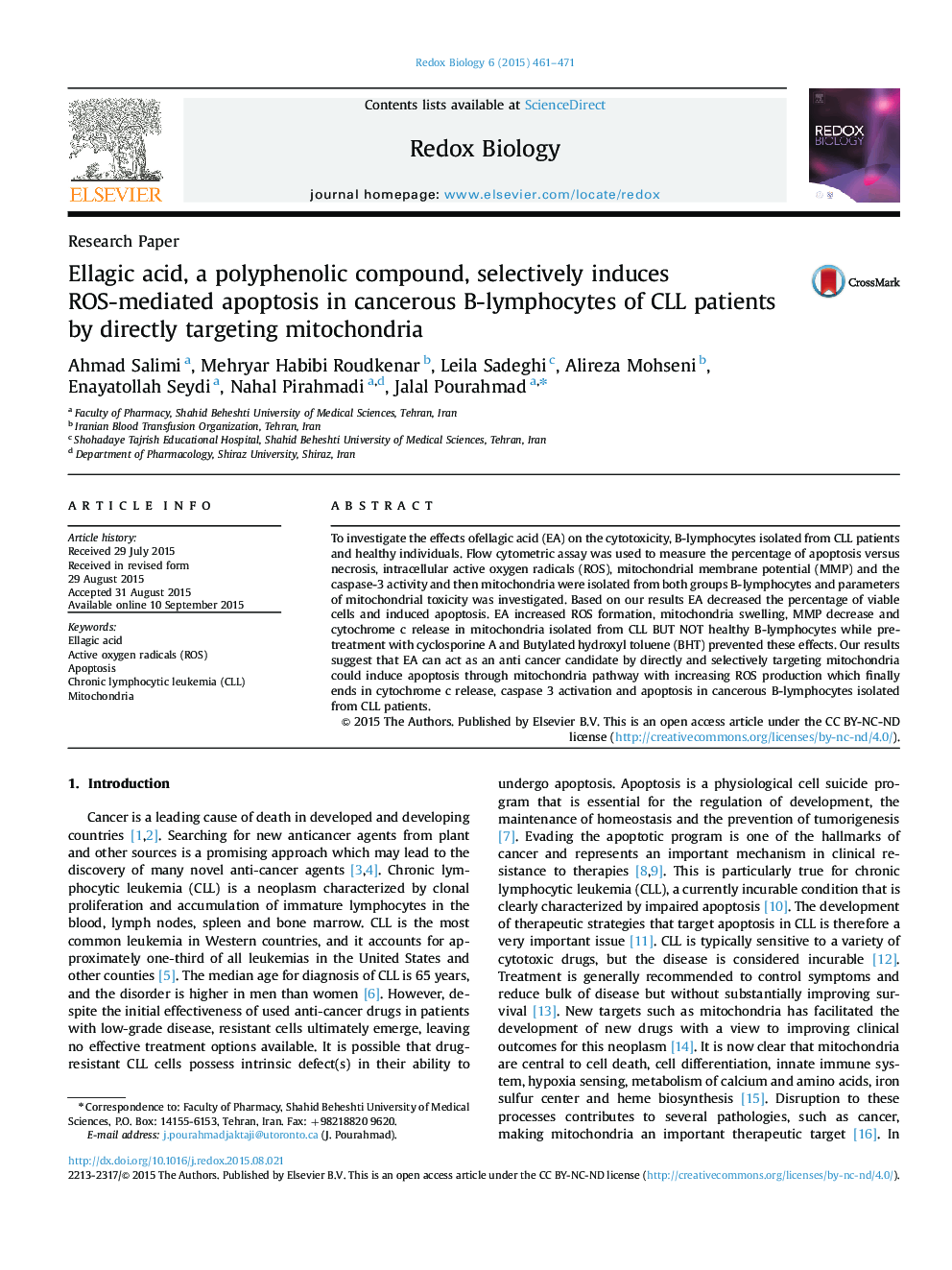| Article ID | Journal | Published Year | Pages | File Type |
|---|---|---|---|---|
| 1922944 | Redox Biology | 2015 | 11 Pages |
•EA directly and selectively targets mitochondria in cancerous B-lymphocytes.•EA selectively increases mitochondrial ROS in cancerous B-lymphocytes.•EA selectively releases mitochondrial cyt C in cancerous B-lymphocytes.•EA can act as an anti-cancer candidate in CLL by selectively inducing apoptosis through mitochondrial pathway.
To investigate the effects ofellagic acid (EA) on the cytotoxicity, B-lymphocytes isolated from CLL patients and healthy individuals. Flow cytometric assay was used to measure the percentage of apoptosis versus necrosis, intracellular active oxygen radicals (ROS), mitochondrial membrane potential (MMP) and the caspase-3 activity and then mitochondria were isolated from both groups B-lymphocytes and parameters of mitochondrial toxicity was investigated. Based on our results EA decreased the percentage of viable cells and induced apoptosis. EA increased ROS formation, mitochondria swelling, MMP decrease and cytochrome c release in mitochondria isolated from CLL BUT NOT healthy B-lymphocytes while pre-treatment with cyclosporine A and Butylated hydroxyl toluene (BHT) prevented these effects. Our results suggest that EA can act as an anti cancer candidate by directly and selectively targeting mitochondria could induce apoptosis through mitochondria pathway with increasing ROS production which finally ends in cytochrome c release, caspase 3 activation and apoptosis in cancerous B-lymphocytes isolated from CLL patients.
